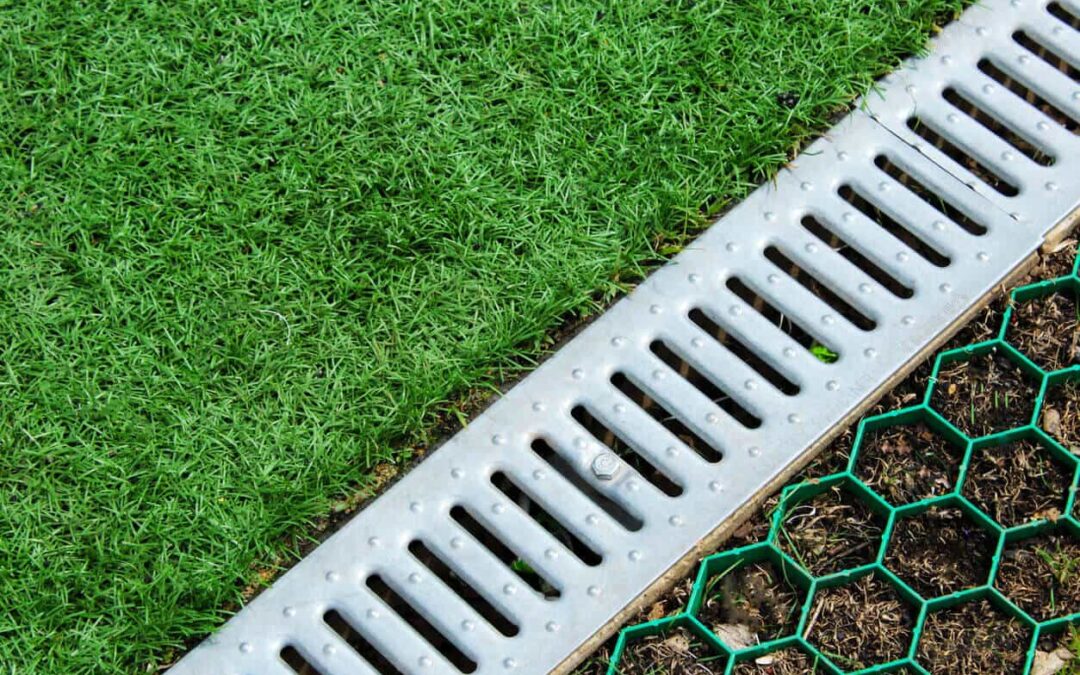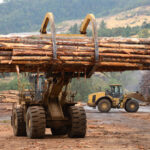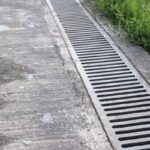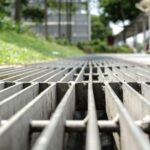Exploring the Causes of Trench Drains Failure and How to Avoid Them
Both residential and commercial properties benefit from trench drainage systems.
In this new blog post, we’ll look at the common reasons trench drains fail and how to avoid them.
Using this information is helpful when it’s time to choose the right drainage system for your property.
What Is A Trench Drain?
Before we discuss the common reasons trench drains fail and how to avoid them, we need to first understand what a trench drain system is.
A trench drain is a long, narrow trench, which is dug under the ground, covered with a grate, and used to direct excess surface water away from a specific area.
Trench drains are often found at the end of a driveway, along sidewalks, on roadways, and in manufacturing facilities and other industrial sites.
Improper Installation
Improper installation of trench drains is a sure way to cause problems and leave a property with water damage.
Installation requires precise measurements and appropriate climate conditions. When measurements are off, the drain won’t fit properly.
When pouring the concrete trench drain onsite, there is more room for adjustments.
However, if you’re installing in weather conditions or a climate not conducive to curing concrete, the trench drain won’t cure well.
To avoid improper installation, have a professional do the measuring, choose the right trench drain for the job, and secure a crew that knows what they’re doing.
- Related topic: 3 Types of Drainage: All You Need to Know
Choosing The Wrong Type Of Trench Drain
There are four types of trench drains. Choosing the right one from the beginning will help in avoiding problems down the road.
Let’s look at those four types:
Former Trench Drains
Former trench drains are similar to cast-in-place. The concrete is poured onsite into a form, but the difference is in the type of form used.
The former system uses a cardboard or polystyrene form rather than building one out of wood, as the cast-in-place method does.
Once poured and set, the form is then removed. The former method is a time saver since forms aren’t built but premade.
However, this method isn’t eco-friendly due to the waste of materials being tossed after the formation of the trench.
Former systems are a good choice when cost is an issue.
Cast-In-Place Trench Drains
The cast-in-place system, as we mentioned, is much like the former method. Forms are built out of wood, and the trench is then poured over the forms.
The forms are then removed. Wood is a sustainable solution, making cast-in-place more popular than former trench drains.
Cast-in-place has its pros and cons.
It’s a flexible method since the trench is poured onsite, yet also risky if the weather doesn’t cooperate.
Concrete must cure before it’s strong enough to do its job. Curing requires the right mix of temperature and humidity.
Cast-in-place is more labor-intensive and costly than some other options because there is a need for the right equipment and workers who know what they’re doing.
Pre-Cast Trench Drains
The pre-cast method uses a trench drain that is premanufactured, so there’s no need to pour the trench drain onsite.
Pre-cast trench drains save time and money. They eliminate the need to pour concrete and save you money because of it.
The greatest benefit of pre-cast drains is that they arrive fully cured, meaning they’re strong and ready to begin draining as soon as you place them.
Climate doesn’t play a role. A downside, however, is transporting a pre-cast trench drain.
They can be quite large, so transportation gets complicated.
When necessary, joints are used to connect pieces of the drain together onsite, so you can transport the trench in multiple pieces.
- You can also read: How to Recognize & Fix Drainage Issues on Your Commercial Property
Linear Trench Drains
Linear systems, also called liners, are made from fiberglass, polymer concrete, steel, or plastic.
On their own, they aren’t strong enough to withstand the needs of a heavily used trench drain.
A concrete or asphalt body encases the linear drain to add strength. Linear trench drains are inexpensive and better for smaller jobs.
Choosing The Right Grate
Once you choose the right trench drain, you must choose the proper grate to cover it.
Using the wrong grate leads to issues with debris, overflowing trench drains, and unsafe areas for pedestrians.
The following is a list of common trench drain grates:
Heel-Proof Grate
Heel-proof grates are used in areas where people might walk over the trench drain grate.
They have small holes so things like high-heeled shoes won’t get stuck in them.
Because of the small holes, heel-proof grates are only well suited for areas with low water flow.
Standard Grate
Standard grates can handle medium to heavy water flow and work well just about anywhere unless pedestrians are involved.
These grates have wider openings, allowing plenty of excess surface water to flow through.
Decorative Grate
There are several designs of decorative grates, and they are chosen for aesthetic purposes.
For serious water flow, the size of the openings is more important than how the grate looks.
Still, decorative grates come in many sizes, and sometimes, they can give a grate a more stylish look.
Maintaining A Trench Drain
Properly maintaining trench drains is the best way to keep a drain working efficiently.
The drains are designed to redirect water flow; however, trench drains see their share of debris and waste. Regular cleaning keeps them running smoothly.
The most common way to clean a trench drain is with hydro blasting.
Hydro blasting helps avoid debris and waste buildup and clears the trench drain path.
Use a professional service that offers hydro blasting and get on a regular schedule for cleanings.
Avoiding the maintenance of a trench drain only leads to a trench drain that needs repairs down the road and has a shorter lifespan.
No matter which drainage system you need, focus on proper installation, the correct drain for the job, the proper grate, and maintenance of the trench drain.
Whether it’s for residential, commercial, or industrial drainage, K&B Brother’s Contractors has you covered.
Contact us for more information about protecting your property from excess surface water.






